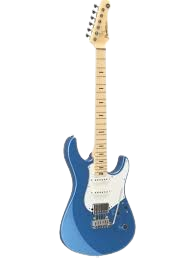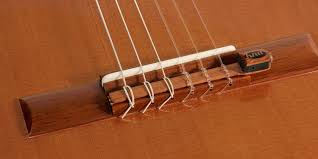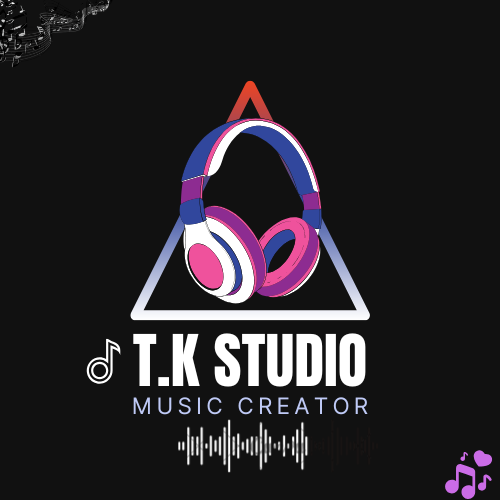ELECTRIC GUITAR
Few instruments have shaped modern music like the electric guitar. From the gritty riffs of rock and roll to the smooth licks of jazz and the crushing tones of metal, the electric guitar is a versatile powerhouse that has defined generations of sound.


The electric guitar was born in the early 1930s, but it exploded in popularity in the 1950s with the rise of rock music. Innovators like Les Paul, Leo Fender, and Gibson created designs that are still widely used today—like the Gibson Les Paul, Fender Stratocaster, and Telecaster.
As amplification technology improved, guitarists found new ways to manipulate sound, giving birth to effects like distortion, reverb, and delay, and shaping the tones that define genres.
Whether you’re new or seasoned, understanding the basic parts of an electric guitar helps you appreciate how it works:
- Body: Solid, semi-hollow, or hollow—this affects tone and sustain.
- Neck: Usually bolt-on or set; maple and rosewood are common materials.
- Pickups: Convert string vibrations into electrical signals. Single-coil and humbuckers are the two main types.
- Bridge: Can be fixed or tremolo-based (like a Floyd Rose or Bigsby).
- Controls: Usually include volume, tone knobs, and pickup selectors.
One of the electric guitar’s biggest strengths is its sonic flexibility. You can plug it into various amps and use pedals to create an infinite range of sounds.
- Clean Tones: Sparkly and bright, perfect for funk, pop, and jazz.
- Crunch and Overdrive: Warm, gritty sounds used in blues and classic rock.
- Distortion: Thick and aggressive, ideal for hard rock and metal.
- Ambient and Experimental: Delay, reverb, and modulation pedals open up creative landscapes.
Electric guitar legends have inspired millions. A few icons include:
- Jimi Hendrix – Revolutionized electric guitar with feedback, effects, and soul.
- Eric Clapton – Brought blues into the rock spotlight.
- Eddie Van Halen – Introduced two-handed tapping and fast lead playing.
- Tom Morello – Pushed the boundaries with effects and innovation.
If you’re new to electric guitar, here’s a basic setup to get going:
- Electric Guitar – Choose one that fits your style and comfort.
- Amp – Start with a small practice amp with built-in effects.
- Cable – A standard 1/4″ instrument cable connects your guitar to the amp.
- Tuner – Clip-on or pedal tuners keep your guitar in tune.
- Picks, Strap, and Case – Essential accessories for comfort and protection.
The electric guitar is more than an instrument—it’s a tool for expression, rebellion, storytelling, and innovation. Whether you’re playing punk riffs in your bedroom or jazz solos on stage, the electric guitar gives you a voice in the world of music.
So plug in, turn up the volume, and let your creativity flow. The world is waiting to hear your sound.
Would you like a version optimized for SEO or tailored for a specific audience (like metalheads, beginners, or blues fans)?
Unlike acoustic guitars, electric guitars rely on pickups and amplifiers to produce sound. This opens the door to:
- Volume control – Perfect for bedroom practice or loud stage shows.
- Tonal flexibility – Clean jazz tones, gritty blues, heavy distortion… all from one instrument.
- Effects – Add reverb, delay, fuzz, and more to create your unique voice.
The electric guitar is truly a chameleon, adapting to whatever genre or mood you’re exploring.
Here’s a simple beginner setup:
- Electric Guitar – Start with a comfortable model like a Stratocaster or Epiphone Les Paul.
- Amplifier – A small combo amp with built-in effects is great for home use.
- Cable – Connects your guitar to the amp.
- Tuner – Essential for keeping your guitar in tune.
- Optional: Pedals for reverb, overdrive, or delay as you grow.
Pro Tip: Don’t get overwhelmed by gear. A basic setup is all you need to start playing.
Looking to buy your first guitar? Here are some popular picks this year:
- Yamaha Pacifica 112V – Reliable, versatile, and affordable.
- Squier Classic Vibe Stratocaster – Vintage feel, great tones.
- Epiphone Les Paul Studio – Thick sound and stylish design.
- Ibanez GRX70QA – Great for rock and metal beginners.
Once you’re comfortable with your guitar and amp, it’s time to play with effects. Some classic starter pedals include:
- Overdrive – Smooth breakup, perfect for blues and classic rock.
- Distortion – Crunchy, aggressive tones for rock and metal.
- Delay – Echo-like effect that creates space.
- Chorus – Adds depth and shimmer to your sound.
Pedals can drastically change your tone, so experiment until you find your signature sound.
The electric guitar is more than an instrument—it’s a form of self-expression. Whether you’re covering your favorite songs or writing originals, it gives you the tools to create your own musical identity.
Start simple, play often, and enjoy the journey. Every legendary guitarist was once a beginner, just like you.
Coming Next on the Blog:
- “Top 5 Guitar Riffs Every Beginner Should Learn”
- “How to Choose the Right Amp for Your Style”
- “What’s the Deal with Single-Coil vs. Humbucker Pickups?”
Unlike acoustic guitars, electric guitars rely on pickups and amplifiers to produce sound. This opens the door to:
- Volume control – Perfect for bedroom practice or loud stage shows.
- Tonal flexibility – Clean jazz tones, gritty blues, heavy distortion… all from one instrument.
- Effects – Add reverb, delay, fuzz, and more to create your unique voice.
The electric guitar is truly a chameleon, adapting to whatever genre or mood you’re exploring.
Here’s a simple beginner setup:
- Electric Guitar – Start with a comfortable model like a Stratocaster or Epiphone Les Paul.
- Amplifier – A small combo amp with built-in effects is great for home use.
- Cable – Connects your guitar to the amp.
- Tuner – Essential for keeping your guitar in tune.
- Optional: Pedals for reverb, overdrive, or delay as you grow.
Pro Tip: Don’t get overwhelmed by gear. A basic setup is all you need to start playing.
Whether you dream of shredding like Eddie Van Halen, grooving like John Mayer, or riffing like Slash — the electric guitar is your gateway to musical freedom. In this guide, we break down everything you need to know to choose the right electric guitar, get started, and unlock your unique tone.
The electric guitar changed music forever. Unlike acoustic guitars, it doesn’t rely on a hollow body for sound. Instead, pickups convert string vibrations into electric signals, which are then amplified — giving you the power to shape your tone endlessly.
With effects pedals and amp settings, one guitar can sound like a dozen different instruments. That’s why it’s the weapon of choice for guitarists in rock, blues, pop, jazz, funk, metal, and beyond.
Buying your first or next electric guitar? Keep these factors in mind:
1. Body Style
- Solid Body (e.g., Fender Stratocaster) – Most common; great sustain.
- Semi-Hollow (e.g., Gibson ES-335) – Warmer tone, great for jazz and blues.
- Hollow Body – Rich acoustic-like tone, often used in jazz.
2. Pickups
- Single-Coil – Bright and sharp (great for funk, blues, indie).
- Humbucker – Thicker, warmer sound (great for rock, metal, jazz).
- P90 – Somewhere in between; gritty and bold.
3. Neck Feel
- Try different neck shapes (C, U, V) and fretboard radii. Comfort matters more than you think!
4. Budget-Friendly Models
- Squier Classic Vibe Series – Vintage tones at an affordable price.
- Yamaha Pacifica 112V – Great for beginners and intermediate players.
- Epiphone Les Paul Standard – Legendary look and tone without the Gibson price tag.
A great guitar is only half the story. Your amp and effects pedals shape your voice even more.
Best Beginner Amps:
- Boss Katana 50 MkII – Versatile, with built-in effects.
- Fender Mustang LT25 – Great modeling amp for exploring tones.
- Orange Crush 20RT – Simple, punchy, and built to rock.
Must-Have Effects Pedals:
- Tuner Pedal – Start here!
- Overdrive/Distortion – For grit and growl.
- Delay – For echo and ambience.
- Reverb – Adds depth and space.
- Looper – Great for practicing and layering riffs.
Learning these iconic riffs will build your confidence fast:
“Day Tripper” – The Beatles
“Smoke on the Water” – Deep Purple
“Seven Nation Army” – The White Stripes
“Sunshine of Your Love” – Cream
“Iron Man” – Black Sabbath
“🎻 Classical (Nylon-String) Guitar

🔹 What it is:
A type of acoustic guitar with nylon strings, producing a softer, mellower tone.
🔸 Key Features:
- Wider neck
- Nylon strings (easier on fingers)
- Warm, rounded sound
🎵 Best For:
Classical music, flamenco, fingerstyle, and beginners (due to softer strings).
